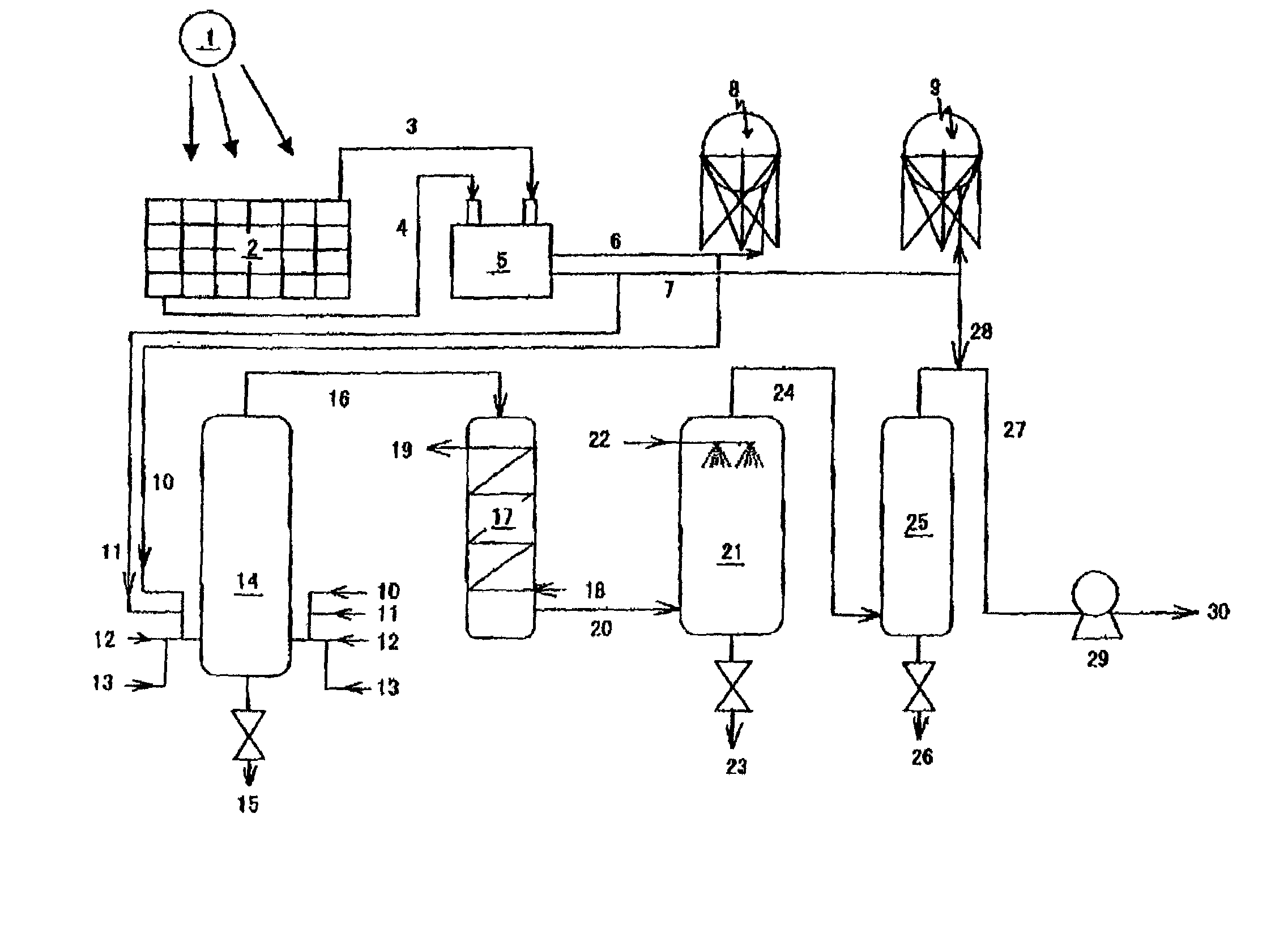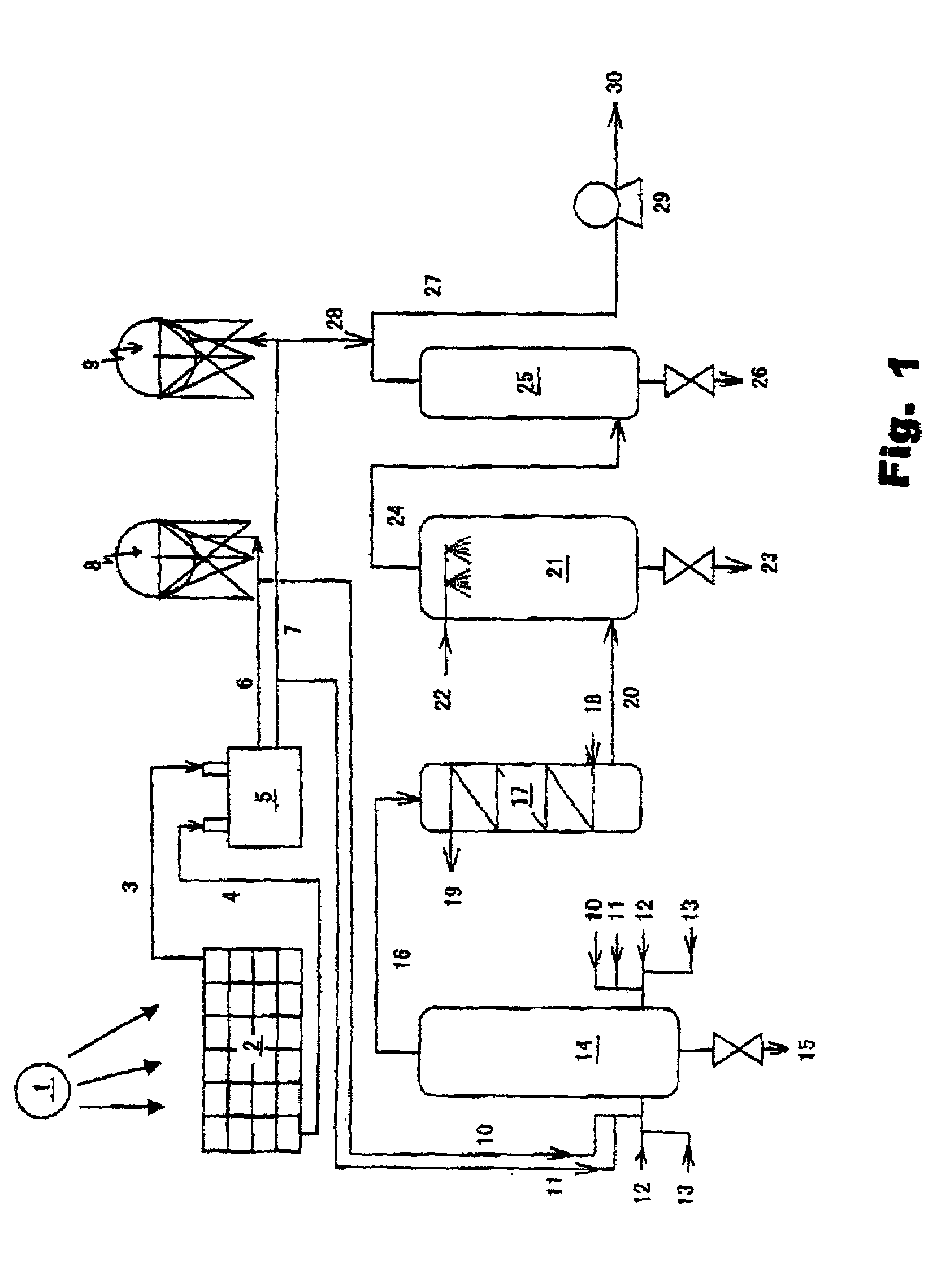Method for the gasification of coal
- Summary
- Abstract
- Description
- Claims
- Application Information
AI Technical Summary
Benefits of technology
Problems solved by technology
Method used
Image
Examples
example 1
[0060]Using the process flow shown in FIG. 1, gasification of the coal with the aforesaid composition is carried out. The solar energy is used to electrolyze water. This Example is based on the first aspect of the invention.
[0061]Three thousand kw / day of direct-current power is generated in the power generator using heat from a solar collector or from power generation cell 2. The direct-current power is transmitted via electric wires 3 and 4 to electrolysis bath 5. In electrolysis bath 5,843 kg / day of water is electrolyzed into 750 kg / day (23.44 moles / day) of oxygen and 93 kg / day (46.88 moles / day) of hydrogen. The produced oxygen is sent via line 6 to oxygen gasholder 8 and stored therein. Similarly, the hydrogen is sent via line 7 to hydrogen gasholder 9 and stored therein.
[0062]One thousand kg / day of pulverized coal is directed via line 2 to gasification reactor 14 kept at about 1335° C. At the same time, 750 kg / day of oxygen is introduced from oxygen gasholder 8 via oxygen introd...
example 2
[0068]Using the process flow shown in FIG 1, gasification of the coal with the aforesaid composition is carried out. The solar energy is used to electrolyze water. This Example is based on the second aspect of the invention.
[0069]Three thousand and seven hundred kW / day of direct-current power is generated in power generator using heat from a solar collector or from power generation cell 2 The direct-current power is transmitted via electric wires 3 and 4 to electrolysis bath 5. In electrolysis bath 5, 1045 kg / day of water is electrolyzed into 928 kg / day (29 moles / day) of oxygen and 117 kg / day (58 moles / day) of hydrogen. The produced oxygen is sent via line 6 to oxygen gasholder 8 and stored therein and, similarly, the hydrogen is sent via line 7 to hydrogen gasholder 9 and stored therein.
[0070]One thousand kg / day of pulverized coal is sent via line 12 to gasification reactor 14 kept at about 1220° C. At the same time, 928 kg / day of oxygen is introduced from oxygen gas holder 8 via o...
PUM
 Login to View More
Login to View More Abstract
Description
Claims
Application Information
 Login to View More
Login to View More - R&D
- Intellectual Property
- Life Sciences
- Materials
- Tech Scout
- Unparalleled Data Quality
- Higher Quality Content
- 60% Fewer Hallucinations
Browse by: Latest US Patents, China's latest patents, Technical Efficacy Thesaurus, Application Domain, Technology Topic, Popular Technical Reports.
© 2025 PatSnap. All rights reserved.Legal|Privacy policy|Modern Slavery Act Transparency Statement|Sitemap|About US| Contact US: help@patsnap.com



